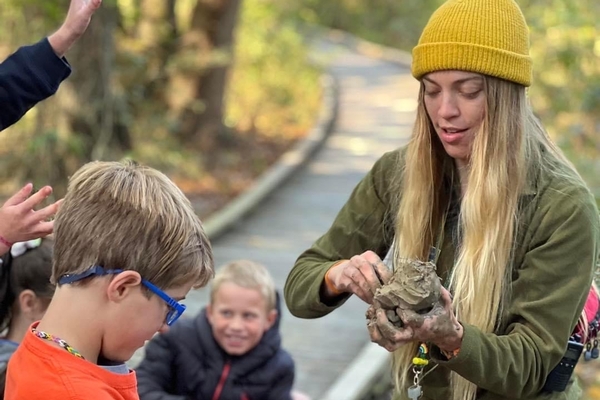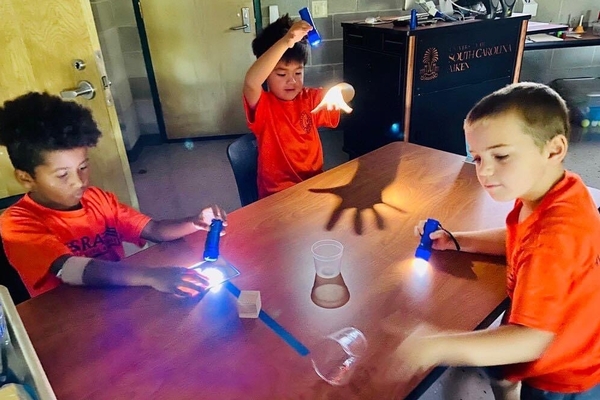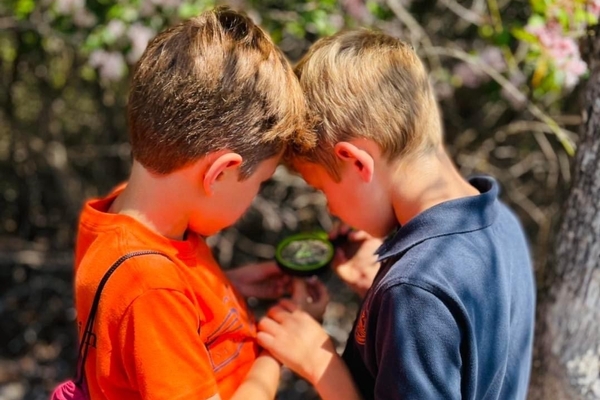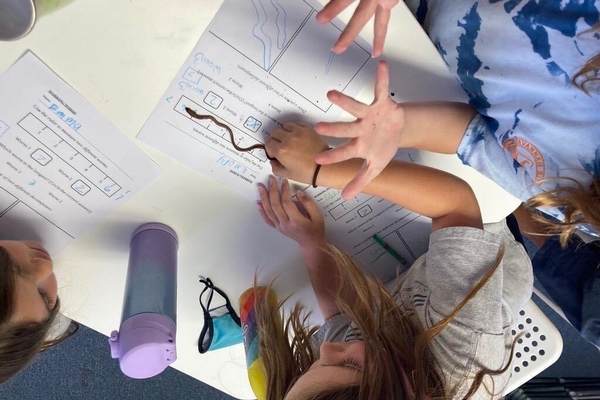 Savannah River Academy
Savannah River Academy
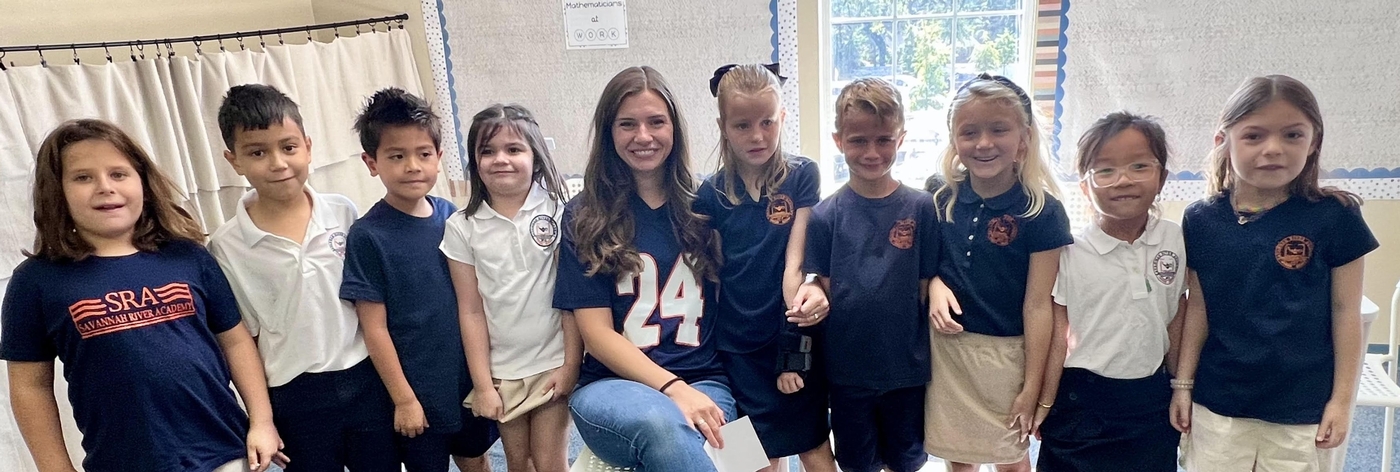
Primary Grades
Building academic skills and a love of learning
The primary grade program at SRA is a joyful place for children in grades two through four to learn and grow. Our curriculum is designed to build on a child's natural sense of curiosity and connection to the world around them. Inquiry-driven, project-based studies provide a rich and meaningful context for student learning. Academic instruction is thoughtfully designed to meet the needs of each learner and challenges students to achieve their personal best, creating a strong foundation for future learning.
Our 8:1 student-to-teacher ratio allows each teacher to structure their learning environment and materials to each student’s learning level and strength. As students progress through the primary grades, this ensures that they build strong foundations in reading, writing, and math, explore the natural and physical world around them, and enhance their learning through hands-on opportunities. The program fosters intellectual curiosity, inspiring students to make connections, ask questions, think analytically, and act with integrity, all within a supportive and nurturing environment.
The primary grades classrooms are vibrant and loving places of learning. Students care about what they learn; they have a voice in their classrooms, posing questions of interest to them and bringing their individual strengths to the process. Through inquiry and exploration, the program engages students in their learning while continuing to build their fundamental skills in all subject areas. We believe that students learn best when they take ownership of their learning. This translates into a joy for learning, which explains why SRA students love coming to school.
At SRA, every student is known, valued, and celebrated by their teachers, classmates, and community. Social-emotional learning is vital in our primary grades program and is integrated throughout the curriculum. Students learn the strategies and skills to work collaboratively, resolve conflicts, act with compassion, and lead with courage.
Primary Grade Curriculum:
Language Arts/Reading
Our Language Arts curriculum is grounded in the Science of Reading, combining research-based instruction with a love of literature and meaningful nonfiction texts. We provide explicit, systematic instruction in phonics, fluency, vocabulary, and comprehension, using an Orton-Gillingham-based approach to phonics and word study. This multisensory, structured method supports all learners in developing strong decoding and spelling skills.
High-quality fiction and non-fiction texts are at the heart of our instruction, helping students build knowledge, think critically, and engage deeply with language. Through rich discussions, structured writing, and meaningful reading experiences, students grow into confident readers and skilled communicators. By blending evidence-based literacy practices with a passion for books and learning, we cultivate students who not only can read and write—but love to do both.
Mathematics
At Savannah River Academy, we use Singapore Math to build a deep, lasting understanding of mathematics. This internationally recognized approach goes beyond memorization, focusing on problem-solving, number sense, and critical thinking. Here’s why Singapore Math benefits our students:
- Builds Strong Foundations – Focuses on mastery, number sense, and deep understanding rather than rote memorization.
- Visual Learning Approach – Uses the CPA (Concrete-Pictorial-Abstract) method to make math concepts more accessible.
- Enhances Problem-Solving – Emphasizes bar modeling and multi-step word problems to develop logical reasoning.
- Supports Mixed-Age Learning – Structured progression allows for differentiation across grade levels.
- Prepares for Advanced Math – Strengthens mental math, number flexibility, and higher-level thinking skills.
Science and Social Studies
In science, students engage in hands-on, experiential learning that fosters curiosity and critical thinking. Exploring life science, physical science, and earth/space science, students experiment, build, design, and problem-solve as they investigate meaningful themes. Activities are interactive and inquiry-focused, based on the Next Generation Science Standards, helping students connect scientific concepts to the world around them while building skills for future learning.
In Social Studies, students explore history, geography, civics, economics, and culture through immersive projects, discussions, and role-playing. Based on the National Curriculum Standards for Social Studies, students develop critical thinking and real-world skills by analyzing sources, asking big questions, and making meaningful connections. Students also build foundational academic skills such as note-taking, research, and presentation creation to prepare them for future learning.
Primary Grade Highlights:
Our primary grades emphasize inquiry-based learning, critical thinking, and personalized instruction within a supportive, small-group environment.
- Multi-age, skill-based classrooms challenge students at all levels while encouraging collaboration and leadership among peers.
- Students rotate through subject-specific classes in groups of no more than 12 students, ensuring individualized attention and rigorous academic engagement.
- Learning is hands-on and exploration-driven: whether conducting experiments, engaging in projects, or investigating real-world problems, students actively discover and apply new concepts.
- Critical thinking and problem-solving are central to every lesson, with a focus on challenging students through small group collaboration, discussions, and inquiry-based learning.
- Monthly character education themes and service projects foster empathy, responsibility, and a sense of community, helping students grow academically and socially.
- By emphasizing exploration, intellectual challenge, and individual attention, students develop resilience, curiosity, and a strong foundation for future academic success.
